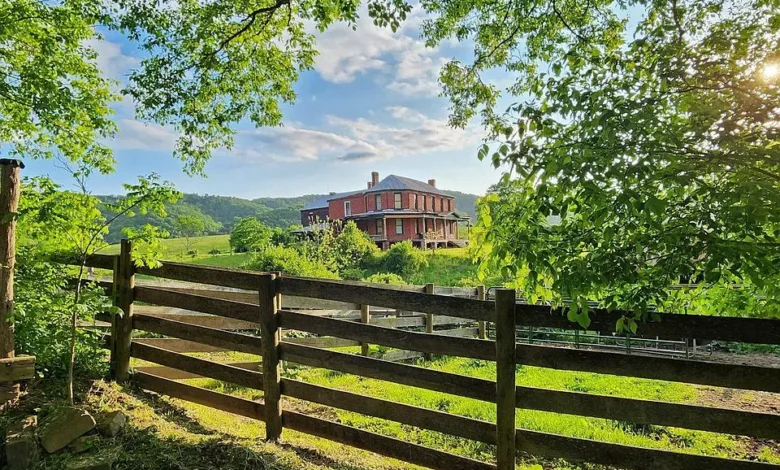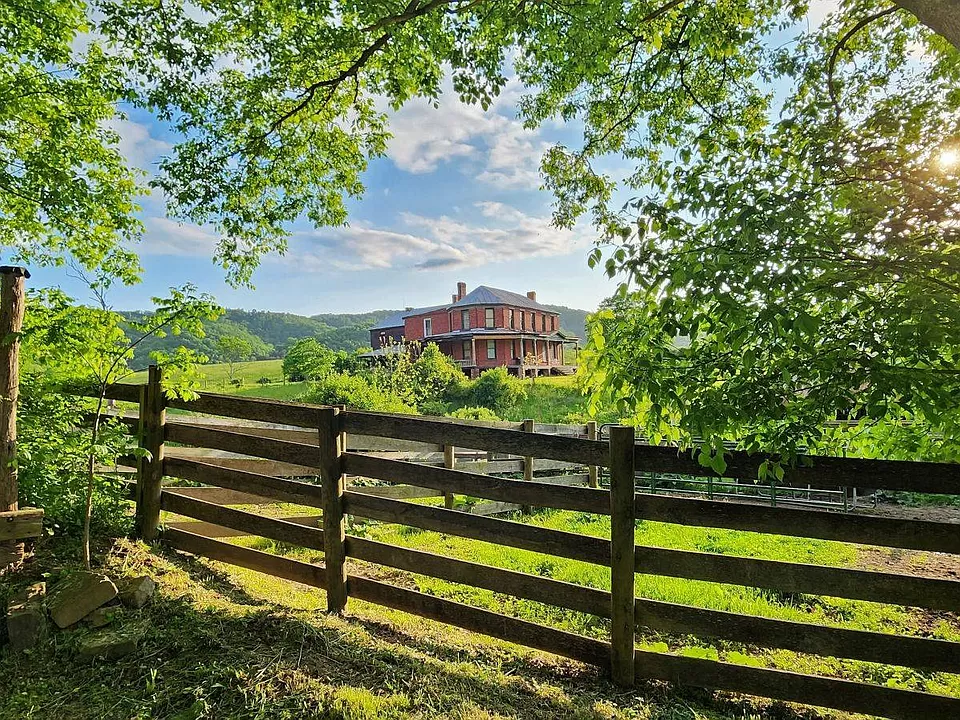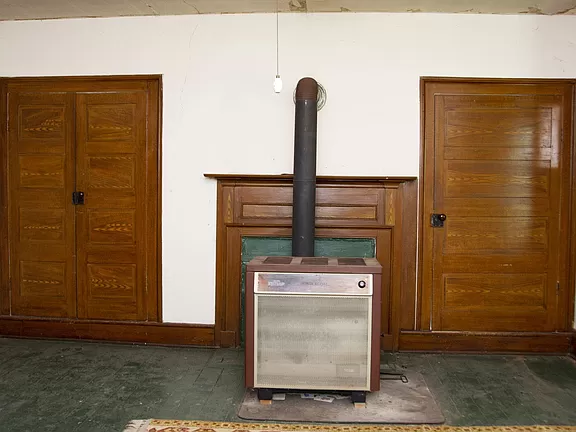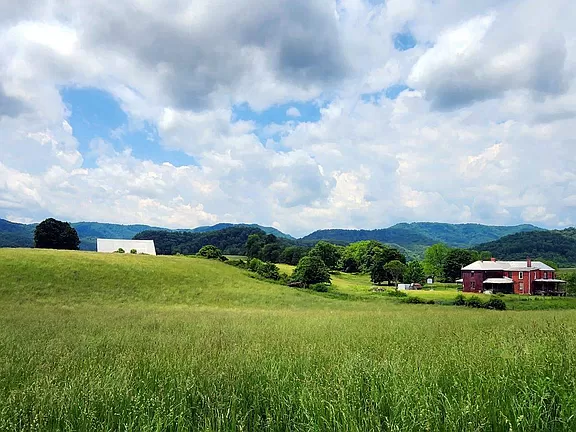
HISTORIC TRAVELLER 1840 THE BRICK HOUSE
HISTORIC TRAVELLER 1840 THE BRICK HOUSE (HAMILTON/JOHNSTON/JARRETT/FLESHMAN FARM) By Margaret Hambrick, Local Historian Major William Hamilton likely came to the Greenbrier Valley in 1769 and moved to the Blue Sulphur area in 1773. He married Isabelle Clements. He built a log cabin on this farm and lived to be 81 years old (Dayton 1942: p 262). As the family’s wealth increased, the Brick House was built by either son Andrew Hamilton who married Delilah Jarrett or son Jacob Hamilton. Faux grain painting on doors on second floor of The Brick House Dated by a brick near the front door which says "1840", this house shows its roots in the Adam style including "having curved or polygonal projections to the side or rear" (McAlester 1994: p 153). The use of a hipped roof was not uncommon to this style. The once detached kitchen was incorporated into the house by the use of a breezeway with living space added behind and above the kitchen. The bricks may have been fired and laid by locally famous brickmaker John Dunn. He is known to have made the bricks for the Blue Sulphur Springs Resort and what is more likely than, while there, he was also engaged to make the bricks for this house. While the outside retains its Adamesque characteristics, the inside shows evidence of style change and renovation. The faux grain painting on the woodwork in the four main upstairs rooms is a remarkable example of this style of decoration. Andrew D. Johnston purchased the farm from Jacob Hamilton in 1855 and this farm is best known as the place where General Robert E. Lee’s famous horse, Traveller, was foaled (Dayton 1942: p 263). Born in 1857, this grey gelding with black points stood 15.3 hands high. He took top prizes in the 1858, 1859 and 1860 Lewisburg Fair. He was trained by an enslaved person, Frank Wilson, who after emancipation changed his name to Frank Winfield Page (Pendleton 2004: p 13). Some of the early horse training apparatus is on display at the North House Museum in Lewisburg. Mary Lucinda Page (Kelly), the first of Frank’s two daughters, wrote to her daughter Harriet M. Williams … in 1976 that "My father was taught to go out on the Johnson farm early in the mornings and drive up the young horses from the field. He started riding at the age of ten. The horses were penned up; a bridle put on them. Then he would ride those horses every day until they were gentle. That’s why it is said he was the first man to break ‘Traveler’ Gen R. E. Lee’s famous ‘war horse’" (Pendleton 2004: p 14). HIGHLIGHTS *"Traveller 1840", is the historic farm where Robert E. Lee’s war horse, Traveller, was foaled in 1857. *The two story Adamesque style home was built circa 1840 in what was then Virginia’s Blue Sulphur Valley, nearly a quarter century before West Virginia became a state *Traveller 1840 has been part of a working farm since the 1770’s. The property currently consists of the home grounds and pasture and/or cropland. The property is thought to have first been settled in 1773 by Major William Hamilton *17 +/- acres of hay and grazing land surround the home creating a country estate property *The property will be surveyed prior to closing *Build date: Circa 1840 *An underground spring, the original water source for the home, is still producing and is currently used to water livestock. The spring exit from underground is protected by a spring house made of sandstone *Constructed of hand-made – kiln fired clay bricks, which may have been fired and laid by locally famous brickmaker John Dunn, who made and laid the bricks for the nearby Blue Sulphur Springs Resort *Hand cut sandstone was quarried nearby for use as lintels, foundation stones, walkways, and a basement stairway *4,028 +/- Sq. ft. living area with a partial basement *Rich and diverse resident wildlife population in perfect harmony with farming operations *Minutes to historic Lewisburg, jet airport, interstates, hospital and city amenities
From Zillow



